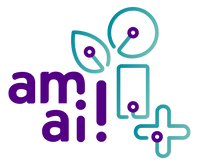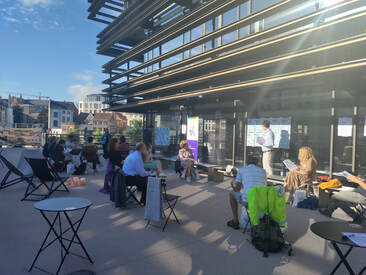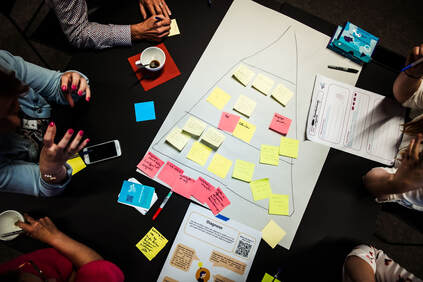Phase 2: from ideas to solutions
Citizens work together with AI experts and domain experts to develop rough ideas into fully-fledged concepts for AI solutions.
In the second phase, we focus on deepening the ideas from citizens. Many citizens' ideas are still vague or rough. Moreover, interdisciplinary teams are needed for the impactful realization of AI ideas. That's why, in this phase, amai! brings together citizens, civil society organizations, AI companies, knowledge institutions, and local governments to delve into these ideas and translate them into more elaborate AI concepts.
The elaboration of this phase differed significantly between the different editions of amai!.
Citizens work together with AI experts and domain experts to develop rough ideas into fully-fledged concepts for AI solutions.
In the second phase, we focus on deepening the ideas from citizens. Many citizens' ideas are still vague or rough. Moreover, interdisciplinary teams are needed for the impactful realization of AI ideas. That's why, in this phase, amai! brings together citizens, civil society organizations, AI companies, knowledge institutions, and local governments to delve into these ideas and translate them into more elaborate AI concepts.
The elaboration of this phase differed significantly between the different editions of amai!.
amai!1 - Campfire sessions
In the first edition, these workshops were named 'campfire sessions'. The outcomes of these sessions served directly as the basis for the project call (see phase 3). This approach limited the number of ideas on which project consortia could work from 350 ideas to 17 elaborated concepts.
In the first edition, these workshops were named 'campfire sessions'. The outcomes of these sessions served directly as the basis for the project call (see phase 3). This approach limited the number of ideas on which project consortia could work from 350 ideas to 17 elaborated concepts.
- A video of the first series of co-creation sessions (campfire sessions) can be viewed here (in Dutch).
- Download the fill-in templates (in Dutch) used during the workshops here (amai! 1 - 2021)
amai!2 - No co-creation
In the second edition, this phase was omitted. The project team believed that the in-depth exploration of ideas during campfire sessions was very valuable, but this way of working limited the submitted ideas on the amai! platform too much. As a result, valuable (clusters of) ideas could not be selected by consortia for the project call. By scrapping this phase altogether, however, it became harder for potential project partners to find each other.
In the second edition, this phase was omitted. The project team believed that the in-depth exploration of ideas during campfire sessions was very valuable, but this way of working limited the submitted ideas on the amai! platform too much. As a result, valuable (clusters of) ideas could not be selected by consortia for the project call. By scrapping this phase altogether, however, it became harder for potential project partners to find each other.
amai!3 - Co-creation sessions
with the help of the AI Ideation Toolkit
Therefore, this phase was reintroduced in the third edition, under the name 'co-creation sessions'. The main changes compared to the first edition were that the outcomes of these sessions were not restrictive for the project call; submitters could still start their final project proposal from other citizens' ideas than those worked out in the co-creation sessions. In addition, the method was refined, and an 'AI ideation toolkit' was developed to support the creative process.
with the help of the AI Ideation Toolkit
Therefore, this phase was reintroduced in the third edition, under the name 'co-creation sessions'. The main changes compared to the first edition were that the outcomes of these sessions were not restrictive for the project call; submitters could still start their final project proposal from other citizens' ideas than those worked out in the co-creation sessions. In addition, the method was refined, and an 'AI ideation toolkit' was developed to support the creative process.
- An extensive report has been made on the first series of co-creation sessions that describes the method and results in detail. The script that describes the method of the second series of co-creation sessions can be downloaded here (in Dutch).
- Voor deze cocreatie-sessies is een AI ideation toolkit ontwikkeld, dat deelnemers zeer gericht laat nadenken over de meerwaarde die een AI-systeem kan bieden bij een bepaalde probleemstelling. Deze toolkit is hier te bekijken.
- Download de invultemplates die gebruikt werden tijdens de workshops hier (amai! 3 - 2023)
In general, these co-creation moments always proceeded in the same way. In the first step, the participants determined which citizen's idea(s) they wanted to further work on.
After the challenge or problem statement had been chosen and refined, a creative phase followed in which the AI concept was further conceived and elaborated. The sessions ended with a presentation of the different concepts.


